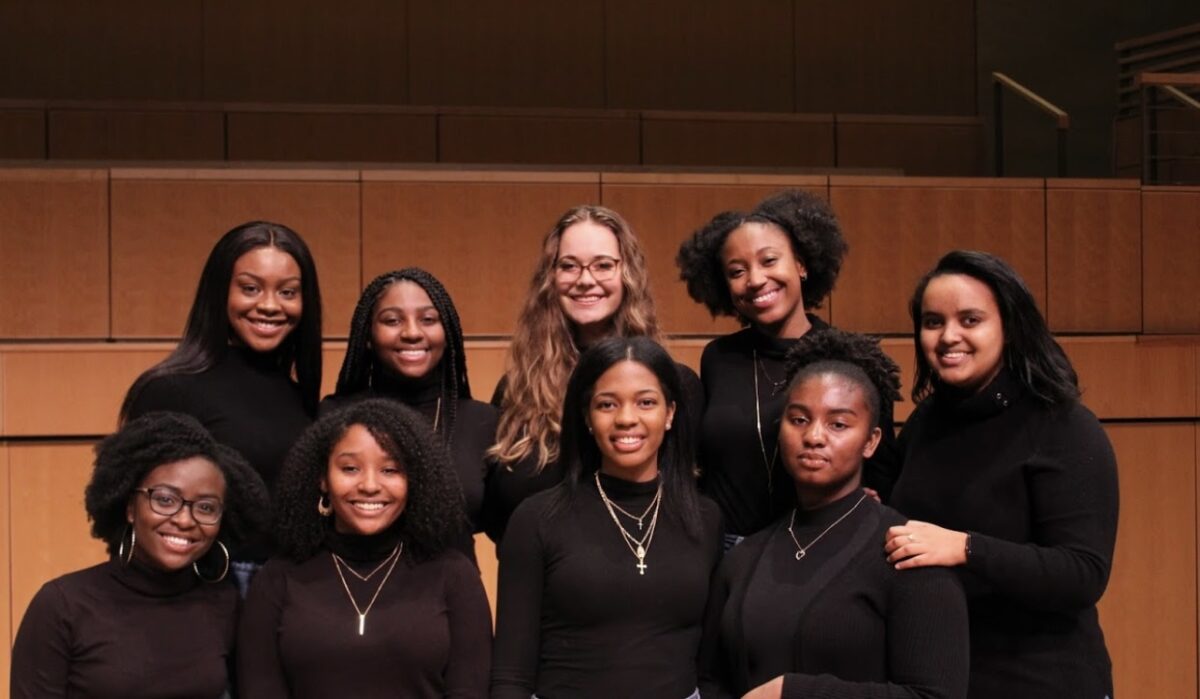Yes, Schools Need to Hire More Counselors. But They Also Need to Work on Themselves.
Given that 2019, I have worked with college students in the metro Detroit space to advocate for sanctuary educational institutions via an business named MIStudentsDream. If you aren’t acquainted with the concept of sanctuary schools, the wide knowledge is that they are a established of guidelines to help and shield immigrant and undocumented college students and their family members.
1 working day when performing with MIStudentsDream, one particular of the youth organizers, a student from a predominantly immigrant community in Detroit, exclaimed:
“Immigrant students shouldn’t have to experience frightened or unwelcome in university. That is not alright. Immigrants are terrified in lots of areas, but college should not have to be a person of them.”
This essential insight has echoed in my head about the many years, and it raises major thoughts about the part schools participate in in supporting students’ mental health and fitness. Despite the fact that immigration difficulties are specific to the local community wherever I’ve put in most of my training profession, each individual group has its possess injustices from environmental racism to rural poverty and gun violence, and all of these issues have a deleterious impact on college students.
The COVID-19 pandemic has made it crystal clear that universities will need much more psychological health and fitness counselors, but what about when trauma takes place in educational facilities? Greater nevertheless, what takes place when educational facilities exacerbate existing trauma for students?
MIStudentsDream’s youth-led sanctuary schools marketing campaign sheds light-weight on how faculties want to handle their personal guidelines and procedures to build safer, extra supportive environments for students. In addition to using the services of extra counselors, this must be seen as a important investment in students’ psychological overall health.
The Contact for Counselors
In my house state of Michigan, we have a 671 to 1 counselor-to-college student ratio, irrespective of the American School Counselor Association’s recommendation of a 250-1 ratio.
Of class, the absence of psychological health support in educational facilities predates the pandemic, but simply because of the apparent mental overall health toll the pandemic induced on college students, coupled with the inflow of federal bucks into college districts, the chorus grew louder. The information was loud and very clear: our college students are struggling, and we require additional college counselors.
Via my ordeals as a classroom instructor and a youth organizer, I know students who misplaced household customers in the course of the pandemic, college students who struggled with foodstuff insecurity and students whose panic and melancholy spiraled in the course of the concern and isolation of the pandemic’s onset. These learners carried these outside stressors into the classroom when in-particular person schooling resumed.
Even so, when it comes to sources of psychological health and fitness struggles, educational institutions themselves are not blameless. As trauma-educated training pro Alex Shevrin Venet factors out in her the latest guide, Equity-Centered Trauma-Educated Schooling:
This is the unpleasant reality: universities bring about trauma and hurt. Academics and administrators, as individuals, can perpetrate this hurt, these as earning derogatory remarks about children’s racial identification or family members. College systems, this sort of as policies, procedures, and strategies, can result in trauma and damage, for illustration, harsh willpower insurance policies that refer kids to the criminal justice technique for habits in college.
When we situation expense in counselors as the sole solution to addressing pupil trauma and mental health difficulties, we absolve schools of their energetic job in causing harm and trauma and disregard the responsibility educational institutions have to create much healthier, much more supportive environments.
For illustration, early in my instructing career, through a get-to-know-you exercise at the start of the yr, I had a pupil share with tentative confidence that they use they/them pronouns. I remember simply just replying, “Cool, many thanks for letting me know!” and seeing them smile with a feeling of aid. On the other hand, a several months into the university yr, they shared how pupils were being normally separated into boys and girls in health club course. For the reason that this student was far more reserved, they felt like they had two alternatives: comply with the recommendations and hurt their personal sense of identification, or refuse to observe the instructions and risk finding into trouble.
In this instance, like so several other individuals in college, a counselor would be helpful for the pupil to method this trauma, but stopping the trauma from occurring in the initial position by way of factors like inclusive gender tactics and professional development around gender id would be extra impactful.
Alternatively, Detroit’s youth-led sanctuary colleges campaign is a highly effective case in point of what it can glance like for schools to take duty for supporting students’ mental health and fitness.
Youth-Led Sanctuary Faculties Marketing campaign
Immigrant communities in Michigan confront exceptional challenges. As a neighbor to Canada, all of Michigan is viewed as a “100-mile zone” terrority, meaning Customs and Border Safety can carry out automobile searches without a warrant. In addition, following 2008, undocumented individuals in Michigan were being no lengthier equipped to attain a driver’s license.
Specified the truth that only driving little ones to school is a supply of anxiety for undocumented moms and dads and students in Michigan, what position do educational facilities will need to perform in supporting pupils who enter the building with already heightened nervousness?
In 2019, Detroit Public Universities Local community District officially declared themselves a Sanctuary District, a testomony to mother or father arranging and advocacy in the metropolis. This declaration established forth a series of internal policies to shield undocumented college students in the district.
Youth organizers in MIStudentsDream ended up inspired by this coverage, but they straight away had a single important concern: What about constitution educational institutions? In Detroit, practically 50 % of the student population attends a constitution university. With no sanctuary insurance policies achieving charter educational facilities, a considerable portion of the immigrant pupil population would be still left devoid of the exact stage of security.
Youth organizers wished to improve this so they introduced a sanctuary colleges marketing campaign that concentrated on advocating for constitution colleges to adopt related procedures with a apparent knowing that sanctuary policies would improve immigrant students’ mental wellness in universities.
Sadly, there is no apparent definition of a sanctuary college, substantially less a entire district. Since there is no singular definition of a sanctuary faculty, the youth organizers developed their possess. According to their definition, all educational facilities in a sanctuary district have to:
- Have no cooperation with Immigration & Customs Enforcement or Customs (ICE) & Border Patrol (CBP) brokers
- Update all faculty varieties & procedures to be immigrant-helpful
- Prepare teachers and personnel on how to aid immigrant and undocumented learners
- Employ police-free of charge faculties and
- Make their sanctuary college policy public to students, family members and community users.
It is value acknowledging that college districts are not liable for the federal and state level guidelines that target, discriminate, and criminalize immigrant communities. Nonetheless, college districts are liable for the ecosystem and community they cultivate in their buildings, and they have the ability to mitigate the effects that immigration has on pupils in university.
If the only method schools took to deal with this crisis was hiring much more counselors, they would disregard what these Detroit youth organizers are highlighting: the fundamental procedures and practices in schools that exacerbate the worry and stress immigrant college students expertise in schools.
Educational facilities Have to Do the job on On their own
When I started off therapy in 2020, I immediately learned that simply attending remedy classes was not sufficient to increase my mental health. My classes were significant, but I experienced to put in the perform in my day-to-working day lifestyle to genuinely enhance my mental wellbeing.
A comparable lesson applies to colleges. Districts are not able to merely provide in far more psychological health counselors and count on their students’ mental wellbeing to automatically boost without the need of simultaneously producing internal procedures and tactics that assistance students’ mental wellness and mitigate the damage that takes place in educational institutions.
Teachers, myself integrated, frequently really feel like they have to go against the college system in get to assistance their students. Like so a lot of of my colleagues and close friends, I have experienced to drive again in opposition to White-centric curriculum to develop initiatives and units that are culturally relevant. I have allowed my students to crack the dress code to truly feel extra comfortable in their pores and skin. I have advocated for gender-inclusive language so that my college students who are nonbinary do not sense invisible. These tiny functions of resistance are only vital simply because of the reality that colleges can be damaging spaces.
Because of this, I have so much gratitude for MIStudentsDream for insisting that colleges just take an energetic part in supporting their psychological health and security. Their strong and impactful arranging and advocacy communicate to the leadership potential of youthful individuals, and their needs highlight an essential reality: colleges want to get the job done on them selves.








